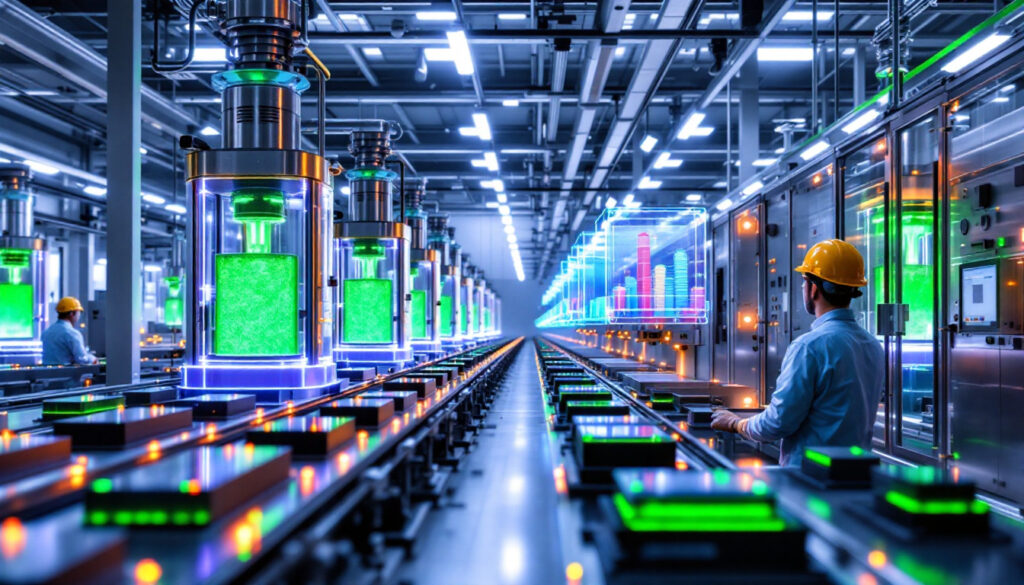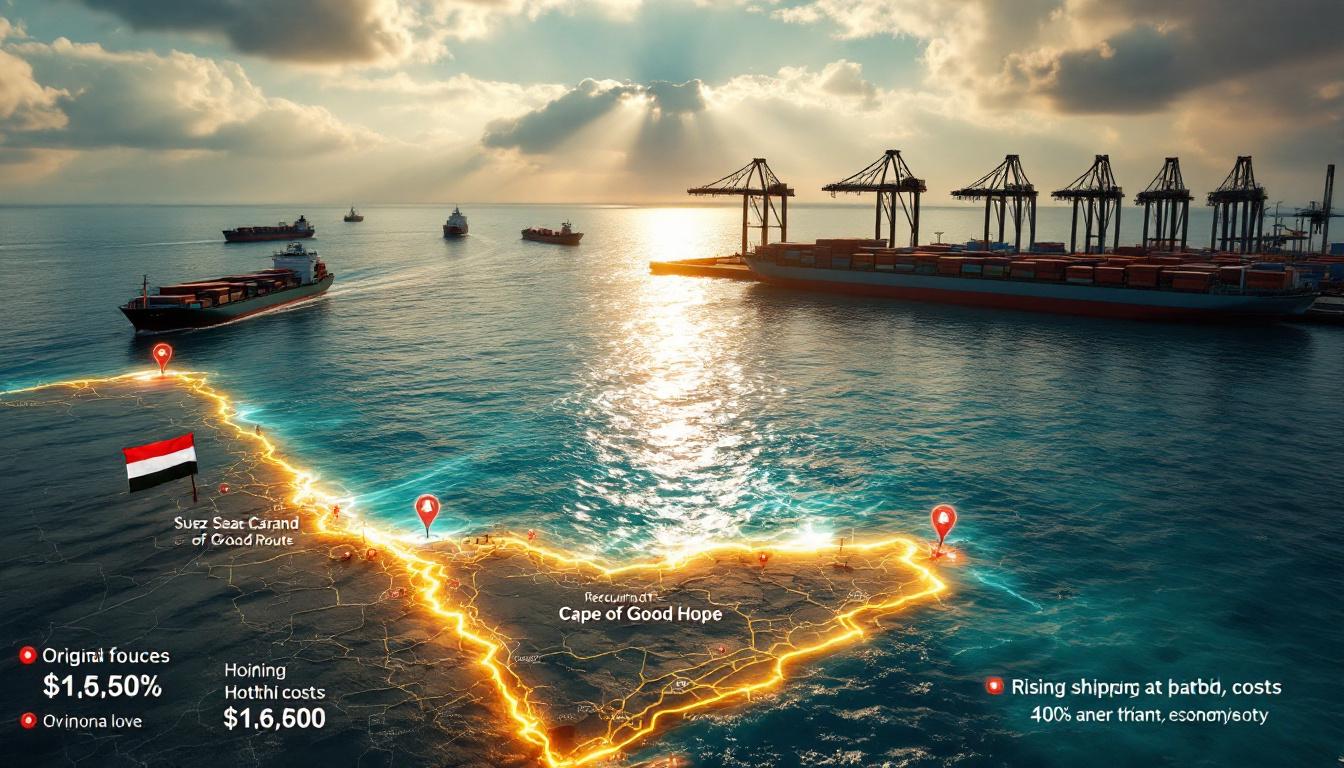Bühler to Supply Battery Production Equipment for FIB: Strategic Partnership for LFP Battery Manufacturing
In a significant development for European battery manufacturing, Bühler has secured a strategic equipment supply agreement with FIB S.p.A. (Fabbrica Italiana Batterie) to provide advanced battery production systems for the upcoming Teverola 2 plant in Italy. This partnership represents a major milestone in strengthening Europe's energy storage capabilities and reducing dependency on imported battery technologies.
The agreement includes the provision of four continuous mixing lines for electrode paste production, utilizing Bühler's innovative co-rotating twin-screw extruder systems. This cutting-edge technology is scheduled for complete installation by the end of 2025, with production expected to commence in 2026.
What is the Bühler-FIB Partnership?
The collaboration between Bühler and FIB S.p.A. centers on a comprehensive equipment supply agreement that will establish Teverola 2 as a significant player in Europe's battery manufacturing landscape. The partnership focuses on implementing advanced continuous mixing technology to produce high-quality battery electrodes efficiently.
Under the agreement, Bühler will deliver four specialized production lines: two continuous mixing lines dedicated to anode electrode slurry production and two for cathode electrode slurry manufacturing. These systems will form the technological backbone of FIB's LFP (lithium iron phosphate) battery production strategy.
The Teverola 2 plant is designed with an ambitious 8 GWh annual production capacity, positioning it as a major contributor to Europe's growing energy storage ecosystem. According to industry analysts, this capacity represents enough battery power to support approximately 100,000 electric vehicles annually, highlighting the strategic importance of this manufacturing expansion.
"The selection of Bühler's technology wasn't just about production capacity," explains Andrea Civitillo, co-founder and Managing Director at Seri Industrial S.p.A. and FIB S.p.A. "Their state-of-the-art continuous mixing technology and proven expertise at Teverola 1 made them the ideal partner for Teverola 2. Their solutions offer unparalleled efficiency, sustainability, and scalability."
How Does Bühler's Technology Enhance Battery Production?
Bühler's continuous mixing technology represents a paradigm shift in battery electrode manufacturing. The system utilizes co-rotating twin-screw extruder technology to integrate multiple process steps into a single seamless operation, dramatically improving efficiency and reducing environmental impact.
Traditional battery production typically involves separate mixing, dispersing, and homogenization processes that consume significant energy and require extensive operator oversight. In contrast, Bühler's integrated approach provides up to 75% energy consumption reduction—using four times less energy than conventional batch mixing methods used by many Asian manufacturers.
The technology's superior dispersion capabilities ensure uniform distribution of active materials, conductive additives, and binders within the electrode slurry. This homogeneity directly contributes to more consistent battery performance and longevity, addressing key concerns in battery reliability for both electric vehicle and stationary storage applications.
"What makes our technology unique is the precision with which we can control the mixing parameters throughout the continuous process," notes Adrian Spillmann, Head of Market Segment Battery Electrode Compounds at Bühler. "This level of control isn't possible with traditional batch processes, and it translates directly to higher quality electrodes with more consistent performance characteristics."
Beyond energy savings, the continuous production method requires fewer operators to manage production, reducing labor costs while improving safety. The automated process control systems maintain tight specifications throughout production runs, ensuring each kilogram of electrode slurry meets exacting standards—critical for the demanding requirements of modern battery applications.
What is the History of the Bühler-FIB Collaboration?
The partnership between Bühler and FIB began in 2020 with the Teverola 1 pilot plant, where Bühler delivered an electrode slurry production system designed for 0.35 GWh annual capacity. This initial collaboration established the technological compatibility between the companies and demonstrated Bühler's capabilities in battery materials processing.
The successful implementation at Teverola 1 provided valuable operational data and validated process parameters that will inform the larger-scale deployment at Teverola 2. Engineers from both companies worked closely to optimize the continuous mixing technology specifically for LFP chemistry, addressing unique challenges like particle size distribution and rheological properties that affect final battery performance.
Bühler's expanding presence in the battery industry extends beyond electrode slurry production. Recently, the company delivered advanced megacasting systems for Honda, demonstrating their versatility in supporting multiple aspects of the electric mobility revolution. This diversification represents a strategic pivot for Bühler, leveraging their materials processing expertise across the energy storage value chain amidst the ongoing battery metals boom.
Industry insiders note that Bühler's twin-screw extruder technology wasn't initially developed for battery applications. The company adapted precision mixing systems originally designed for food processing and polymer compounding, demonstrating a successful technology transfer that brings proven industrial reliability to the relatively young battery manufacturing sector in Europe.
Why is This Partnership Significant for European Battery Production?
The Bühler-FIB collaboration comes at a pivotal moment for European battery manufacturing. As the continent accelerates its transition toward renewable energy and electric transportation, establishing robust domestic battery production capabilities has become a strategic priority.
LFP batteries, the focus of the Teverola 2 plant, represent a growing segment of the battery market due to their attractive combination of safety, longevity, and cost-effectiveness. Unlike some other battery chemistries, LFP batteries don't require cobalt or nickel, reducing supply chain vulnerabilities and environmental concerns associated with these materials.
Europe has historically lagged behind Asia in battery production capacity, with Chinese manufacturers dominating the global lithium expansion. The Bühler-FIB partnership represents a concerted effort to rebalance this dynamic by establishing technologically advanced manufacturing capabilities within European borders, reducing logistics costs and carbon footprint associated with battery imports.
The collaboration also aligns with broader European Union initiatives to establish a complete battery value chain within Europe. By 2030, European battery production is expected to supply approximately 30% of global demand, representing approximately €250 billion in annual market value, according to European Commission projections.
"What's particularly noteworthy about this partnership is the focus on manufacturing innovation rather than just scaling existing approaches," notes Adrian Spillmann. "Our continued collaboration with FIB S.p.A. embodies our shared vision of driving innovation and sustainability in the energy sector. We are proud to contribute to such a transformative project."
What Do Industry Leaders Say About the Partnership?
Industry reaction to the Bühler-FIB partnership has been overwhelmingly positive, with experts highlighting the strategic and technological significance of the collaboration.
Andrea Civitillo of FIB emphasizes the transformative potential: "Bühler's technology allows us to produce high-quality electrode materials with unprecedented efficiency. The continuous mixing approach gives us flexibility to adjust formulations quickly as battery chemistry evolves, providing a future-proof production platform."
The partnership also received attention for its contribution to industrial decarbonization. By significantly reducing energy consumption in the manufacturing process, the Teverola 2 plant will demonstrate how advanced production technologies can support broader clean energy revolution goals while maintaining economic competitiveness.
Battery industry analysts point out that the Bühler-FIB collaboration represents a shift in European manufacturing strategy, prioritizing technological differentiation rather than merely attempting to match Asian production scale. This approach leverages Europe's industrial engineering strengths to establish competitive advantage through efficiency and precision.
Key Considerations for Future Battery Manufacturing
The battery production landscape continues to evolve rapidly, with several factors influencing technology selection and production strategies. The Bühler-FIB partnership highlights several important trends that will shape future developments in this sector.
Continuous processing technologies are gaining traction across battery manufacturing as producers seek efficiency improvements. Beyond electrode slurry production, similar approaches are being applied to cathode material synthesis, coating operations, and electrolyte preparation, suggesting a broader paradigm shift in production methodologies.
Energy efficiency has become a competitive differentiator in battery manufacturing. With energy costs representing a significant portion of production expenses, Bühler's approach offers substantial operational advantages. Early estimates suggest the Teverola 2 plant will consume approximately 25% less energy per kilowatt-hour of battery capacity compared to conventional manufacturing methods.
Automation and digitalization feature prominently in the Teverola 2 design. Advanced process monitoring systems will collect real-time data throughout production, enabling predictive quality control and continuous optimization. This digital twin innovations infrastructure creates a foundation for future AI-driven manufacturing improvements as these technologies mature.
Furthermore, industry experts are carefully watching market dynamics as recent lithium oversupply insights suggest potential challenges for battery manufacturers in managing raw material costs and supply chain stability.
FAQ: Bühler-FIB Battery Production Partnership
What type of batteries will be produced at the Teverola 2 plant?
The facility will produce LFP (lithium iron phosphate) batteries, known for their safety, longevity, and cost-effectiveness. LFP chemistry offers superior thermal stability compared to nickel-based alternatives, reducing fire risks while providing thousands of charge cycles. These characteristics make LFP batteries particularly suitable for grid storage applications and certain electric vehicle segments where maximum energy density is less critical than lifetime cost and safety.
When will the Teverola 2 plant begin production?
Production is expected to begin in 2026, following equipment installation by the end of 2025. The implementation timeline includes extensive commissioning and qualification phases to ensure all systems meet performance specifications before full-scale production commences.
How does Bühler's technology compare to conventional battery production methods?
Bühler's continuous mixing technology consumes up to four times less energy and requires fewer operators while streamlining multiple process steps into a single operation. The system's precise control capabilities ensure consistent material properties throughout production runs, addressing a key challenge in electrode manufacturing where quality variations can significantly impact battery performance and longevity.
What is the significance of this partnership for European battery manufacturing?
This partnership enhances Europe's capacity to produce high-performance LFP batteries locally, supporting the continent's transition to renewable energy and electric mobility. By establishing advanced manufacturing capabilities within Europe, the collaboration reduces supply chain vulnerabilities and transportation-related emissions while creating highly skilled manufacturing jobs. The technology transfer also positions European manufacturers to compete based on production efficiency rather than simply labor cost advantages.
Ready to Discover the Next Major Mineral Find Before the Market?
Discovery Alert's proprietary Discovery IQ model instantly notifies investors about significant ASX mineral discoveries, turning complex data into actionable insights that give you a crucial edge. Explore why historic discoveries can generate substantial returns by visiting Discovery Alert's dedicated discoveries page and begin your 30-day free trial today.




